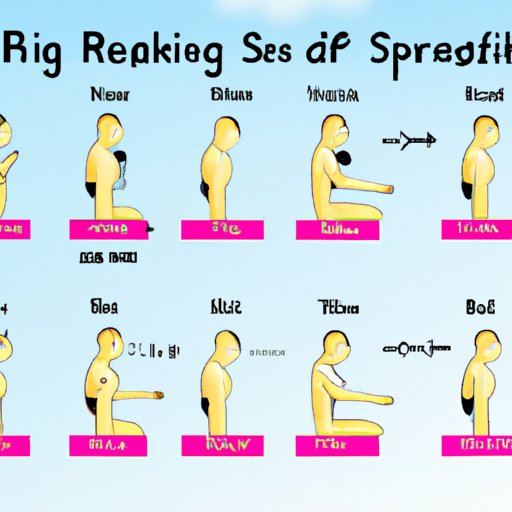Introduction
Breathing is one of the most important elements of exercise. Proper breathing technique can help you maximize your performance and reduce fatigue during physical activity. It is also necessary to ensure that you are receiving enough oxygen to your body’s muscles and organs. In this article, we will explore the importance of proper breathing technique and provide tips on how to use it for different types of exercise.
Learn Proper Breathing Techniques for Specific Exercises
One of the most effective breathing techniques for exercise is deep belly breathing. This type of breathing involves taking a deep breath in through the nose and then slowly exhaling through the mouth. The goal is to fill your abdomen with air so that your diaphragm is able to move more freely. This helps to increase oxygen intake and improve overall lung capacity. Deep belly breathing has many benefits, including improved circulation, increased endurance, and reduced stress.
Deep belly breathing is beneficial for all types of exercise, but there are certain activities that require specific breathing techniques. For example, when doing yoga, it is important to synchronize your breath with your movements. When lifting weights, you should focus on exhaling on the most difficult part of the exercise. When running or cycling, focus on taking slow, deep breaths.

Practice Deep Belly Breathing When Running or Cycling
If you are planning on running or cycling, it is important to practice deep belly breathing beforehand. Start by standing tall and take a deep breath in through your nose. As you exhale, purse your lips and imagine your breath pushing out from your stomach. Continue this process for a few minutes until you feel comfortable with the technique. Once you have mastered the technique, try running or cycling while maintaining a steady and controlled breath.
When running or cycling, focus on taking slow, deep breaths. This will help you maintain a consistent pace and avoid feeling out of breath. Make sure to keep your chest relaxed and your shoulders down. Additionally, try to keep your breathing rhythmic and in sync with your movements. This will help you focus on the task at hand and improve your overall performance.

Focus on the Rhythm of Your Breath During Intense Activity
During intense activity, it is important to focus on the rhythm of your breath. This means taking short, quick breaths in order to get the most oxygen to your muscles. Try to match your breathing to the intensity of the activity. For example, if you are sprinting, take quick, shallow breaths. If you are performing an aerobic activity, take a deeper, slower breath.
Focusing on the rhythm of your breath can help you stay focused and prevent you from getting too out of breath. Additionally, it can help you stay in control of your movements and maintain good form. Finally, it can help you push yourself to reach your goals faster and with greater ease.
Take Breaks and Practice Mindful Breathing During Rest Periods
Taking breaks and practicing mindful breathing during rest periods is also important. Taking breaks gives your body time to recover and helps to prevent injury. During these rest periods, practice mindful breathing by focusing on your breath and being aware of the sensations in your body. This type of breathing helps to lower stress levels and can improve mental clarity and focus.
Examples of rest period activities that incorporate mindful breathing include yoga, meditation, and tai chi. These activities help to promote relaxation and allow you to reconnect with your body. Additionally, they can help to improve balance and coordination.

Incorporate Breathing Exercises Into Your Daily Routine
Finally, it is important to incorporate breathing exercises into your daily routine. These breathing exercises can help to improve your lung capacity, increase energy, and reduce stress. Examples of breathing exercises include deep belly breathing, alternate nostril breathing, and four-part breath. Additionally, there are a variety of apps and websites that offer guided breathing exercises.
Incorporating breathing exercises into your daily routine can be challenging, but it is worth the effort. Make sure to set aside time each day to focus on your breath. Additionally, try to make the exercises a part of your regular workout routine. This will help to ensure that you are consistently practicing proper breathing techniques.
Conclusion
In conclusion, proper breathing techniques are essential for any type of exercise. Learning how to use deep belly breathing, focus on the rhythm of your breath during intense activity, take breaks and practice mindful breathing during rest periods, and incorporate breathing exercises into your daily routine can help you maximize your performance and reduce fatigue. So take the time to learn and practice these techniques and enjoy the benefits of better breathing for exercise.
(Note: Is this article not meeting your expectations? Do you have knowledge or insights to share? Unlock new opportunities and expand your reach by joining our authors team. Click Registration to join us and share your expertise with our readers.)
